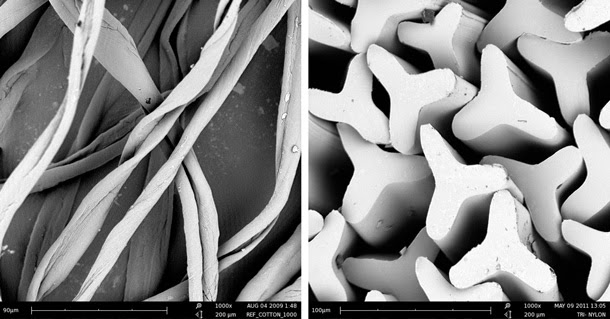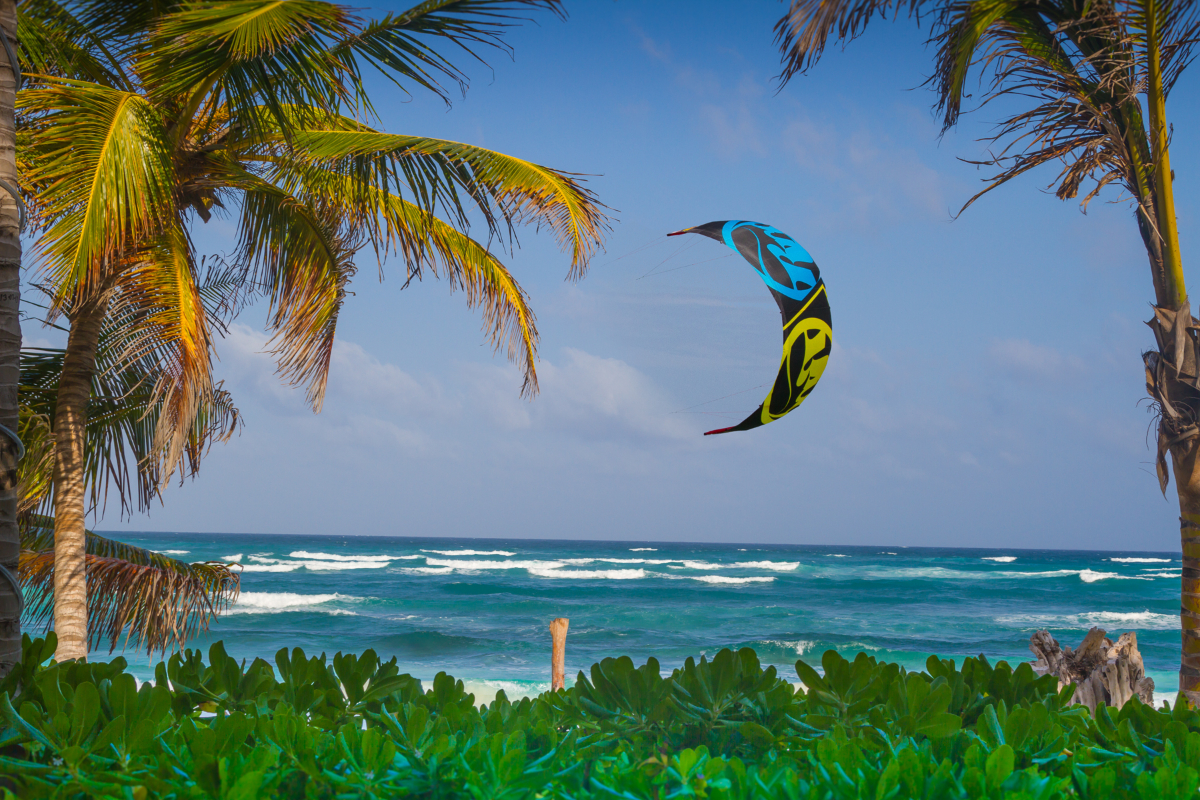Knots on Kite Lines... Watch Out!
The inner danger in having knots on our kite lines and how to properly get rid of them
You do not know how, nor why. Knots on your lines are like mushrooms: they seem to appear from nowhere.
Let's see how to get rid of them and why...

I have noticed that when kitesurfers find knots on their kitesurf lines, some will just ignore them and go for their kitesurfing session as usual, while some others will try untie them, usually unsuccessfully.
Sometimes, a kiteboarding 'expert' appears, who suggests to give it a try with a needle soaked in oil, and others propose to soak the knots in water to make them softer.
The knots on kitesurfing lines can often remain an underestimated problem, and I suggest you immediately untie any of them as they appear. Here's why:
1. SAFETY
As you already know, almost all lines are designed to bear heavy loads before breaking down: somewhere from 200 kg (450 lbs) up to 350 kg (750 lbs) for the lines of better quality. Typically the front-lines have increased load or at worst have equal resistance compared to the back-lines. Considering that each knot induces a reduction of 50% on the breaking load of your kitesurfing line, you can understand how using a bar with a knot is insecure.
Furthermore, Dyneema kitesurf line failure loads are tested in a static situation while your weight is
applied dynamically. This effect will add a new component of strain on your beloved lines.
According to Newton's laws, when you measure your weight in the morning, while yawning on a scale, you do not get your real solicitation on the kite lines, because you will still have to add the force produced by your body mass in acceleration. The amount of added strength is defined by the well-known formula: F = M x A. This effect, which might even double the strain, will help you understand what happens with your kitesurfing lines: in this situation, with lines weakened by knots, a break is quite possible.
Having a kite connected only by 3 lines is not recommended. If you are lucky and the knot is located on one of the front lines, the kite will collapse into the water producing a medium or low traction, even if you instinctively pull the bar. If your knot is on the back lines, it becomes potentially very dangerous for you and for the other kitesurfers around. Your kite will begin to loop, producing an uncontrollable pull. Furthermore, if you set up your safety system in suicide mode your kite might not stop looping and pulling, even if you activate the safety quick release.
2. RISK OF ENDING THE KITESURFING SESSION PREMATURELY
Even though being in high water with 3 lines gives you the opportunity to practice the self-rescue technique to return to the beach, if you are not 100% trained, especially if it's winter, this is something that you might want to avoid. If you left the board to make it is easy to get back on the shore, you will risk losing it, because you will not be able to get back into the water on time to retrieve it. At that point your session will be a GAME OVER.
3. DIFFERENT LINE LENGTH
A knot shortens the line by about 2-4 mm, depending on its position and the thickness of the line. Due to the weakening of the line this difference of length might increase easily. A very sensitive wakestyler would immediately feel the bar's slight unbalance.
4. LIFE OF THE KITE GEAR
A knot is like a sharp "edge" for your lines that also mingles them up. The lines will get more micro-abrasions, deteriorating unevenly. This could impact the longevity of your equipment.
HOW DO YOU CREATE THE KNOTS ON THE KITE LINES?
If you often find yourself with knots on your lines, it might be the result of unwinding the bar with the line terminals downwind of it. You might have been told that wind straightens lines, but I'd say it's the opposite. In fact, the terminal will begin to rotate as a "pinwheel," while being whipped by the wind, and the lines will start twisting and creating knots. Solution: BLOCK terminals in the sand and safely unwind the bar downwind from the kite.
WHAT TO AVOID ANYTIME
During my kitesurfing years I have heard many weird solutions to the knot problem, even by really good instructors. For example, one suggested to 'balance the knots' by adding some on all the straight lines... Good luck with that one.
ANOTHER THING TO AVOID AND WHY
The use of awls or needles on fibers such as Dyneema are lethal for the fiber itself. If we put these materials under a microscope, we would see something like this:

Left: natural cotton fiber. Right: very similar fiber to our Spectra (or Dyneema: different name, same fiber).
The low stretching characteristic of the kite lines is due to the incredible density that Dyneema is made of.
You can easily imagine a needle passing through the left fiber with no damages, but you can't say the same for the right one. A normal sewing needle is in fact three/four times bigger than these fibers and it will be practically impossible to make it pass through them without damaging the monofilaments, resulting in a dangerous impairment of the stretching resistance capabilities, especially in the presence of a knot, which strains the fibers even more. So working with blunt tools, even a seemingly "harmless" needle, is not recommendable.
MY FRIEND AGOSTINO'S OLD SOLUTION
This solution might seem a bit rustic or rough, but it actually turns out to be quite effective.
To untie ANY knots you need 3 simple ingredients
1) Teeth
2) Time
3) Patience
Instructions:
Put the knot in your mouth (maybe you can wash the line first if you are a bit squeamish, if not,
you'll
find it a bit salty), soak it well and after a minute you'll start to gently chew and squeeze it as
a
gum. Never exaggerate with the strain, just let it get soft gently (your teeth will thank you, by the
way).
Change slightly the point of application of the 'bite' while chewing. Be patient and keep going
on
(use this time to focus on the next kite trick you want to try). Leave it up to your saliva - it will
reach
all the gaps, lubricating the movement and the slip of the fibers, forcing the knot to yield, and
allowing a
comfortable loose. Eventually the knot will start getting softer and softer until you are able to untie
it.
That's it, you did it without any instrument or magic lubricants.
If you find the use of teeth a bit dramatic, you can still soak the line with water and use your nails,
it
works the same, with some more patience and effort.
If you have any suggestion, addition or perplexity, please don't hesitate to comment..
Shared article info with Agostino Martino
IKO Level 2 Senior, A.I. Trainer, IKO Certificated
Coach
Head Instructor at NewKiteZone in Punta Pellaro (Reggio
Calabria - Italy)
Original article Link

Flexfit Baseball Cap

Logo: Yoga Kite Love
Promote your Kite School for free!
Index your Kite School in our database.
You will get free lifetime visibility on Kitesurf Culture website.
If you have a website, it will provide precious backlinks to improve your SEO ranking
Relevant Posts

Safety Kitesurf Hook Knife, a must to have in your sessions

The Kitesurf session ended: tips for Kite Gear Maintenance

How to Give Your Kitesurfing Equipment a Double Lifespan
Get free Kitesurfing Resources and Tips
If you like our content and you want to be informed on the next blogposts release, please subscribe here. That will also help us to continue to provide quality content:
Give us your opinion.
Phone Cases

Logo: When life gives you wind go kiting
Promote your Kite School for free!
Index your Kite School in our database.
You will get free lifetime visibility on Kitesurf Culture website.
If you have a website, it will provide precious backlinks to improve your SEO ranking
Relevant Posts

Safety Kitesurf Hook Knife, a must to have in your sessions

The Kitesurf session ended: tips for Kite Gear Maintenance

How to Give Your Kitesurfing Equipment a Double Lifespan
Contrast Coffee Mug

Logo: Kitesurfing making gravity optional since 1977
Latest Posts

Kitesurfing Dubai: an honest guide. Tips, Spots & Winds

Unwind and learn: best beginner kitesurfing spots worldwide

Self-Rescue in Kitesurfing: A Crucial Guide to Safety

Kitesurf Ometepe: an Epic Kite Trip to Nicaragua

Kitesurfing Spring in Andalucia: Unexpectedly Great!